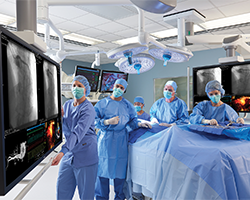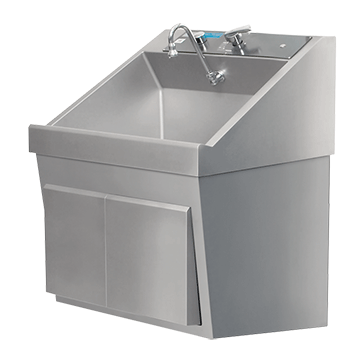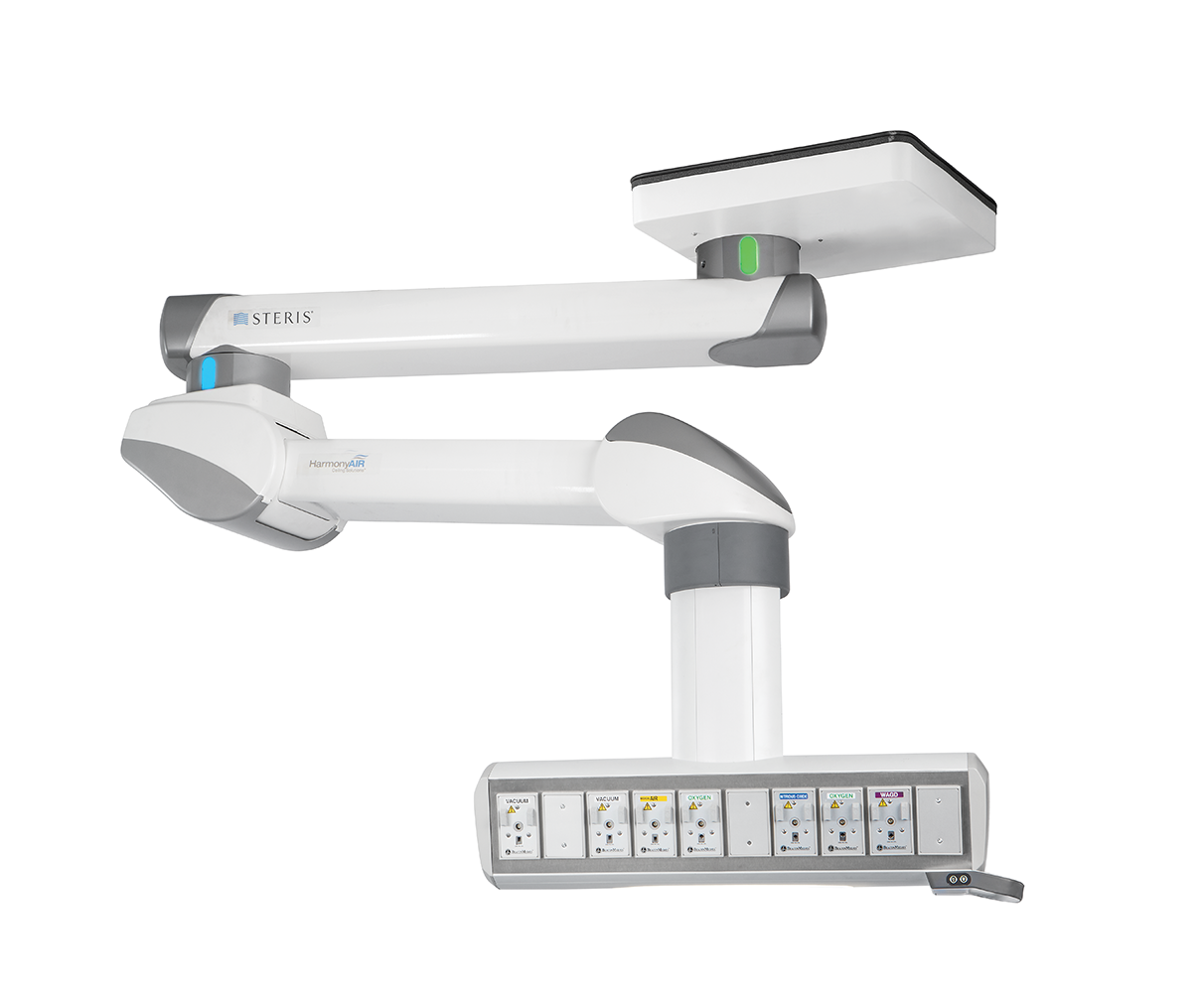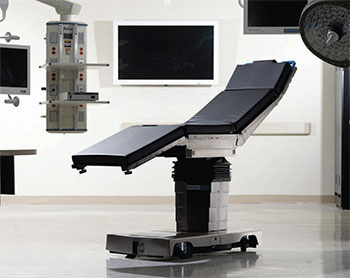Knowledge Center
June 29, 2017
Operating Room Equipment: A Complete Guide
History of Operating Room Equipment
The history of operating room equipment is expansive, and varies depending on the piece of equipment. Some of the earliest operating rooms, also known as operating theaters, were used in the early 1800s. Surgeries were performed during daylight hours as there was no electricity. Additionally, candles were often used for extra lighting.1
In the United States, sterile technique was not used until the 1890s and surgeons only washed their hands after the surgical procedure.1
By the 1900s, asepsis, or the prevention of bacteria from entering a wound or sterile equipment, became practice. Operating equipment could be made sterile through boiling, using autoclaves, and chemical antiseptics. Physicians started to wear white coats, and beds and operating tables were made with clean linens.2
Types of Operating Room Equipment
Operating rooms are designed for surgeons and surgical staff to perform surgical procedures that require time, patience, focus, and safety. Various pieces of equipment are required for use in the operating room.
Surgical Lights – High-quality surgical lighting is essential for performing intricate procedures in the operating room. Surgical lights are designed to provide bright white light to illuminate the surgical site and eliminate shadows, all while keeping the surgical staff cool. LED lights or halogen lights are two types of surgical lights. Surgical lighting is transitioning away from incandescent technology to LED technology due to the many benefits of LED: pure white color, less heat in the surgical field, more accurate color rendition, and improved shadow control.3
Operating Tables – Operating tables, also known as surgical tables, are essential to any operating room. A patient lies on the operating table during a surgical procedure. The purpose of the table is to keep the patient in place while the surgical team operates, and may aid in moving parts of the patient’s body using surgical table accessories. General operating tables are designed to perform a wide range of procedures while others are designed for specific procedures, for example orthopedic tables.
Surgical Booms– Surgical Booms, also known as equipment booms or equipment management systems (EMS), are designed to constrain the electrical cords from various pieces of equipment in the OR that can lead to tripping hazards for staff. By removing the clutter from various cords, surgical booms increase the amount of working space in the operating room. Booms also provide housing for various pieces of equipment and allow that equipment to be positioned to best meet the patient and surgical team needs. Booms are suspended from the ceiling and move easily throughout the operating room. Booms come in various designs. The design chosen by the facility may depend on the space requirements of the OR.
Surgical Displays – Minimally invasive surgery requires surgeons and surgical team members to visualize intricate patient anatomy on surgical displays. They also provide visualization of the procedure to all team members. Surgical displays, including wall displays and large format displays, mount to surgical light arms, equipment columns, or a wall and are used to display a close-up, crisp view of the surgical site. Newer surgical displays may offer high-definition or 4K visualization.
Operating Room Integration Systems – OR Integration is the connection of image and video in the operating room to improve workflow, procedure guidance and peer collaboration. By allowing OR equipment to communicate with each other via technology, OR integration allows OR staff to coordinate and collaborate real-time. Additionally, integration allows for remote control of multiple pieces of equipment and may decrease traffic near the surgical field. Further reduction in room traffic may be achieved as integration allows for remote viewing and communication by those that may otherwise enter the surgical site. This traffic reduction may decrease the risk of surgical site infections.
Blanket Warmers – Blanket warmers, also known as warming cabinets, are used to store and warm intravenous (IV) fluid, linens, and blankets. Keeping fluids and linens warm for patient use help to decrease the risk of hypothermia. Maintaining normal body temperature during surgery can be challenging. This technology not only provides comfort but serves to assist in the maintenance of normal body temperature. Normal body temperature has been linked to improved patient outcomes. Blanket warmers may have one, two or three chambers and may be mobile or stationary.
Scrub Sinks– Washing hands and forearms with a surgical scrub before performing a procedure is vital to preventing infection in the surgical environment. Scrub sinks are used by OR staff to “scrub in” before a surgery. Hand washing remains one of the most important ways to prevent the transfer of bacteria. Scrub sinks provide hands-free operation, thus reducing the risk of contamination during the hand washing process.
Nurse Documentation Stations – Nurse documentation stations are used by OR nurses. Documenting the pertinent medical information related to the surgical case is vital to keeping a patient’s medical record up to date and accurate, allowing care providers access to patient information. These stations can house electronic equipment, and provide a desk for reporting and charting purposes. Nurse documentation stations offer the convenience and organizational tools nurses need to effectively manage patient information.
Explore our Operating Room Equipment
Operating Room Equipment Uses
Which medical equipment is chosen for an operating room depends on the facility and patient need. For example, high-complexity operating rooms may require a sophisticated, cutting edge OR integration system. Small Ambulatory Surgery Centers may have a smaller budget, which could impact their purchase decisions. Regardless of the facility or use, each piece of equipment serves its own vital purpose in the OR:
- Surgical lights are used for the lighting of a surgical site
- Operating tables are used for a patient to lay on during a surgical procedure, and may be adjusted for depending on the procedure
- Surgical booms hide electrical cords attached to various pieces of equipment in the OR to reduce tripping hazards. They can house equipment rendering it mobile and able to be positioned in a variety of locations around the room
- Surgical displays are used to display a detailed view of the surgical site for clear visualization
- Operating room integration systems allow OR staff to coordinate and collaborate on medical decisions through video and imaging connections
- Blanket warmers are used to store and warm intravenous (IV) fluid, linens, and blankets
- Scrub sinks are used by OR staff to “scrub in” before a surgery, reducing the risk of infection
- Nurse documentation stations are used to house electronic equipment, and provide a desk for reporting and charting purposes
Where to Buy Operating Room Equipment?
Quality, durable medical equipment is vital to a safe and productive OR. Surgical and other facility staff should research available products from various medical equipment manufacturers and make their purchasing decisions based on equipment quality, after-purchase service support and price, among other factors. Because choosing the right operating room equipment is typically a long and well-thought out decision, purchasing equipment is typically through a Sales Representative or Distributor. Building partnerships with sales representatives and/or distributors can ensure a seamless experience from the initial decision throughout the lifecycle of the product.
1 History of Pennsylvania Hospital
2 History of Surgery
3 Clinical Benefit of LED Lights






